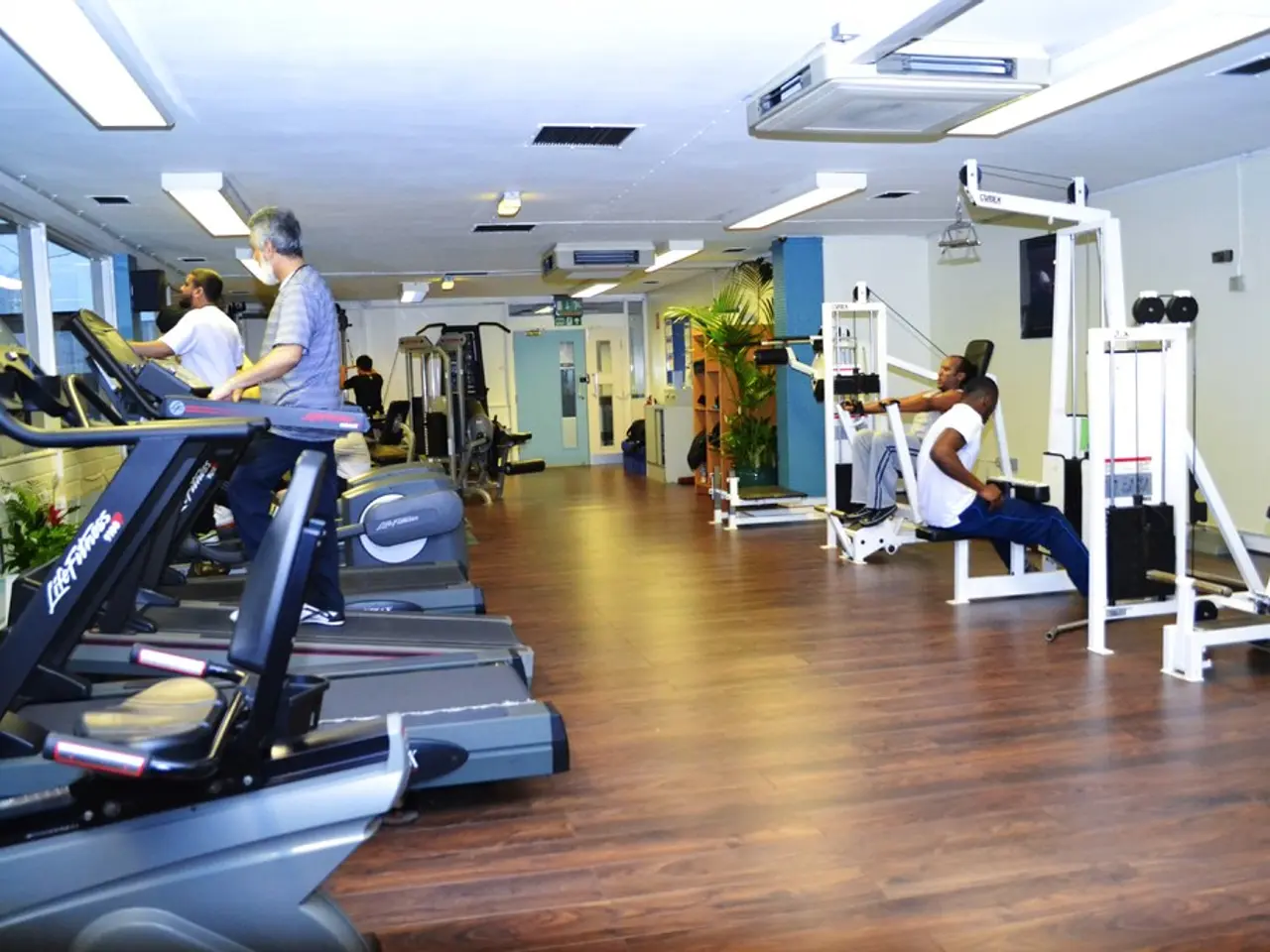Unconventional Fitness Practices: Advantages, Showcases, and Methods of Execution
Eccentric Exercise: A Powerful Approach to Strength Training
Eccentric exercise, a unique approach to strength training, focuses on movements that lengthen muscles, such as lowering into a squat or press-up [1]. This type of exercise offers several benefits over conventional concentric exercise, including greater force production with lower energy cost, enhanced muscle hypertrophy, and superior neuromuscular adaptations [1].
During eccentric contractions, fibers in the muscle split more than during concentric exercise, allowing for higher mechanical load and greater muscle tension [3]. This promotes muscle growth, particularly targeting powerful fast-twitch fibers [1]. Additionally, eccentric training improves neuromuscular function, posture, and technique, contributing to overall strength gains and functional mobility [1][4].
In clinical settings, eccentric training has shown particular benefits for people with mobility impairments, such as chronic stroke patients, by improving walking speed and functional mobility with less cardiopulmonary demand compared to concentric training [2]. Studies also indicate that eccentric-only training is more effective at improving eccentric strength specifically, while concentric and eccentric training produce similar improvements in concentric and isometric strength [5].
However, the higher forces and increased mechanical stress from eccentric contractions lead to more muscle microtrauma and delayed onset muscle soreness (DOMS) compared to concentric exercise [1][3]. While this muscle damage stimulates growth, it also increases the risk of injury if not properly managed, especially in untrained individuals or with poor technique [1][3].
Benefits and Risks Comparison
| Aspect | Eccentric Exercise | Concentric Exercise | |------------------------|---------------------------------------|-------------------------------------| | Force production | Higher (~41% greater) | Lower | | Energy cost | Lower | Higher | | Muscle hypertrophy | Greater muscle tension and growth | Effective, but less hypertrophy | | Neuromuscular effects | Better motor control and stability | Important for movement initiation | | Functional rehab | Useful for impaired mobility patients | Beneficial but sometimes less effective in limited mobility cases | | Muscle damage | More microtrauma and soreness | Less muscle damage | | Injury risk | Higher if uncontrolled or excessive | Lower risk generally |
In conclusion, eccentric exercises provide superior strength and hypertrophy benefits but require careful programming to manage increased muscle damage and soreness. Combining eccentric and concentric training phases is often optimal to maximize gains and minimize injury risk [1][3][5].
It is essential to consult a doctor or physical therapist before trying a new eccentric exercise routine. Eccentric exercise can be used safely by older adults and people with certain medical conditions, such as arthritis, tendinopathy, and Parkinson's disease [6].
Examples of eccentric exercises include eccentric push-ups, where the body is lowered slowly before swiftly pushing back up, and eccentric squats, which can be modified for people with patellar tendinopathy, with more body weight on the affected knee during the first half of the movement [7]. Overhead press can be an exercise requiring weights, which can be replaced with filled water bottles or food cans if weights are not available [8].
Heel drops over a step can strengthen the ankles and are suitable for Achilles tendinopathy. DOMS, or delayed-onset muscle soreness, typically resolves in several days [9]. As with any exercise, it's crucial to maintain proper form and exercise caution to avoid injury, especially when performing eccentric exercises.
In the realm of fitness and health-and-wellness, eccentric exercise, a powerful approach to strength training, offers superior force production and muscle hypertrophy compared to conventional concentric exercise, making it a viable option for those seeking to enhance their fitness-and-exercise routine. However, the increased muscle damage and soreness associated with eccentric exercise require careful management to prevent injury.




